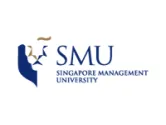Tagit: Mastering the challenge of scaling a business
By Centre for Management PracticeIt was December 2010, and Tagit Pte Ltd (Tagit), the Singapore-based mobile solutions company, was celebrating the end of a bumper year. The company had grown an impressive 170% since it secured its first contract in 2006, posting revenues of S$5.8m in 2010, a 450% increase over the previous year.
Tagit was incorporated in 2004 by Naffi and his co-founder, Shankar Narayanan, both seasoned entrepreneurs who had faced many ups and downs in trying to build a sustainable business proposition for the company. The company’s initial offering was based on a mobile 2D barcoding technology aimed at transforming the advertising industry.
In 2006, Tagit’s offering expanded through a partnership with MobileStruct, a mobile technology solutions company that had developed a proprietary Mobile Application Development Platform called Mobeix. Mobeix allowed enterprises to build secure, scalable, and innovative mobile applications across multiple mobile devices and operating systems.
The technology—the first of its kind in Asia—was introduced in the early days of mobile commerce, when the Blackberry and other mobile devices were just beginning to gain popularity. Mobeix made it possible to view real-time information from any website on the mobile phone without needing to integrate with the backend systems of the enterprise’s individual websites. Thus, Tagit evolved into a mobile software solutions company, helping companies extend their online services to the mobile space.
Despite the potential offered by the technology, it took close to two years before Tagit was able to sign up its first client: in 2006, the company pioneered the mobile box office concept through a tripartite partnership with the telecommunications services company, Airtel, and PVR Cinemas, in India. Following this, Singapore Airlines contracted Tagit to power its first-ever mobile ticketing system, which they ran successfully for four years.
These contracts gave the business a kick-start. However, to expand and scale up the volume-based business, Tagit needed significant funding or enhanced profitability. Healthy returns were possible only by adopting a high value-add business model, which was no longer possible in the online ticketing space, given the intense competition, rapid technological advancements, and low margins.
The co-founders started to consider other options to grow revenues and profits. To their advantage, the Mobeix transaction platform was flexible and could be applied to a range of sectors. At that time, many banks in Singapore were looking to offer mobile services, and seizing the opportunity, Naffi was able to get Citibank India signed up as a client.
Tagit’s licence-based model of operation worked well with banks which, due to privacy and security concerns, preferred bespoke solutions and were willing to pay well for them. Also, having a blue chip bank in their client portfolio went a long way in increasing the credibility of the company.
In 2008, Tagit and MobileStruct agreed to merge, and MobileStruct became a wholly owned subsidiary of Tagit. The intellectual property of the Mobeix technology effectively came under the control of Tagit, and the company now had full rights to use, market, and sell the technology offering.
Business expanded. Tagit’s client portfolio grew to include leading banks in Singapore and around the world, such as UOB, DBS, Standard Chartered Bank, Maybank, Commercial Bank of Dubai, Royal Bank of Canada, and Commonwealth Bank of Australia. In the seven years since Tagit’s inception, the partners had shown great resilience by adapting the company strategy to the constantly changing business environment that typified the technology industry. Their fortitude eventually paid off: Tagit had a stellar year in 2010.
Yet the founders knew better than to rest on their laurels. The company had done well on profitability and capital efficiency, and could boast of cutting-edge technology and a blue chip client suite. However some gaps remained. The enterprise model adopted for mobile banking was tedious and time-consuming as each offering was customised to suit client requirements. Scaling the business required significant funding, for which Singapore was not the ideal location.
Tagit was awaiting its next incarnation, which would involve a scalable business model which was user-based, rather than the current one based on a one-time licensing fee for professional services. The company was also looking to expand into new verticals such as government services, healthcare, and logistics. In order to achieve these goals, the company would need to raise more capital and hire sector experts and professionals to run the company. Tagit was no longer a startup – it needed money to grow and professionals at the helm.
It was time to adjust the sails.




![SBR 5 Lorem Ipsum News 2 [8 May]](https://cmg-qa.s3.ap-southeast-1.amazonaws.com/s3fs-public/styles/exclusive_featured_article/public/2025-05/a_hand_pointing_to_a_futuristic_technology_5b87c9d0e3_3.png.webp?itok=M3Hf-9XR)
![SBR 4 Lorem Ipsum [8 May Top Stories]](https://cmg-qa.s3.ap-southeast-1.amazonaws.com/s3fs-public/styles/exclusive_featured_article/public/2025-05/a_hand_pointing_to_a_futuristic_technology_5b87c9d0e3_2.png.webp?itok=2m5Wl0MX)


![Exclusive three SBR 12 Lorem Ipsum [8 May]](https://cmg-qa.s3.ap-southeast-1.amazonaws.com/s3fs-public/styles/exclusive_featured_article/public/2025-05/a_hand_pointing_to_a_futuristic_technology_5b87c9d0e3_11.png.webp?itok=8kn_UIfA)
![SBR 3 Lorem Ipsum [ Exclusive 2]](https://cmg-qa.s3.ap-southeast-1.amazonaws.com/s3fs-public/styles/exclusive_featured_article/public/2025-05/a_hand_pointing_to_a_futuristic_technology_5b87c9d0e3_1.png.webp?itok=YCyjLegJ)
![SBR 2 Lorem Ipsum [8 May]](https://cmg-qa.s3.ap-southeast-1.amazonaws.com/s3fs-public/styles/exclusive_featured_article/public/2025-05/a_hand_pointing_to_a_futuristic_technology_5b87c9d0e3_0.png.webp?itok=_cKD-29o)

![Video [Event News]](https://cmg-qa.s3.ap-southeast-1.amazonaws.com/s3fs-public/styles/event_news_featured_article/public/2025-05/screenshot-2025-05-08-at-4.58.53-pm_0.png.webp?itok=Kud35sMs)
![Event News SBR 9 Lorem Ipsum [8 may]](https://cmg-qa.s3.ap-southeast-1.amazonaws.com/s3fs-public/styles/event_news_thumbnail/public/2025-05/a_hand_pointing_to_a_futuristic_technology_5b87c9d0e3_8.png.webp?itok=DTh_dbYp)
![Event News SBR 9 Lorem Ipsum [8 May]](https://cmg-qa.s3.ap-southeast-1.amazonaws.com/s3fs-public/styles/event_news_thumbnail/public/2025-05/a_hand_pointing_to_a_futuristic_technology_5b87c9d0e3_7.png.webp?itok=vzDAzb6V)
![Event News SBR 8 Lorem Ipsum [8 May]](https://cmg-qa.s3.ap-southeast-1.amazonaws.com/s3fs-public/styles/event_news_thumbnail/public/2025-05/a_hand_pointing_to_a_futuristic_technology_5b87c9d0e3_6.png.webp?itok=jvHFc4P6)
![Video [Event News]](https://cmg-qa.s3.ap-southeast-1.amazonaws.com/s3fs-public/styles/video_thumbnail/public/2025-05/screenshot-2025-05-08-at-4.58.53-pm_0.png.webp?itok=yZnI0YBb)
![Video 1 SBR [8 May]](https://cmg-qa.s3.ap-southeast-1.amazonaws.com/s3fs-public/styles/video_thumbnail/public/2025-05/screenshot-2025-05-08-at-4.58.53-pm.png.webp?itok=9AAeRz_k)

 Advertise
Advertise

